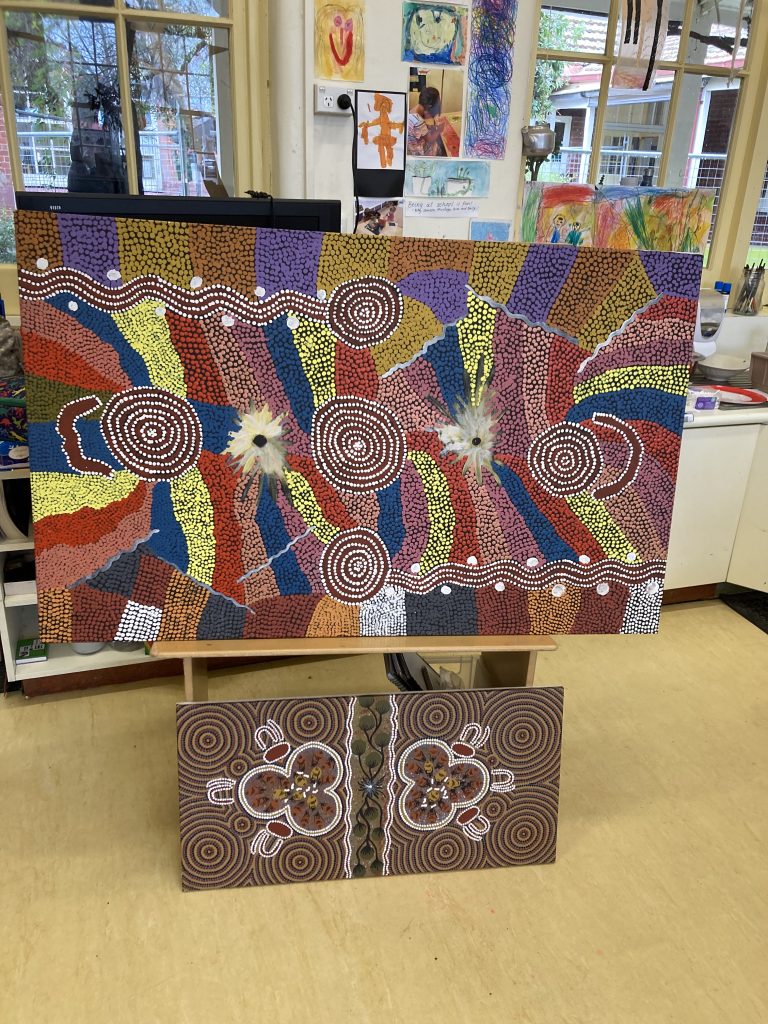Natural materials are a big part of Aboriginal arts. To connect with this, children searched through a selection of natural materials and placed these over a piece of cardboard which they covered using torn pieces of bark sheets as a background. The paperbark mosaic formed the backdrop whilst stones, paper bark, leaves, shells, gum, nuts, twine and feathers covered the cardboard forming the collage. Exploring these materials gave us a better appreciation of how traditional artists made their works.
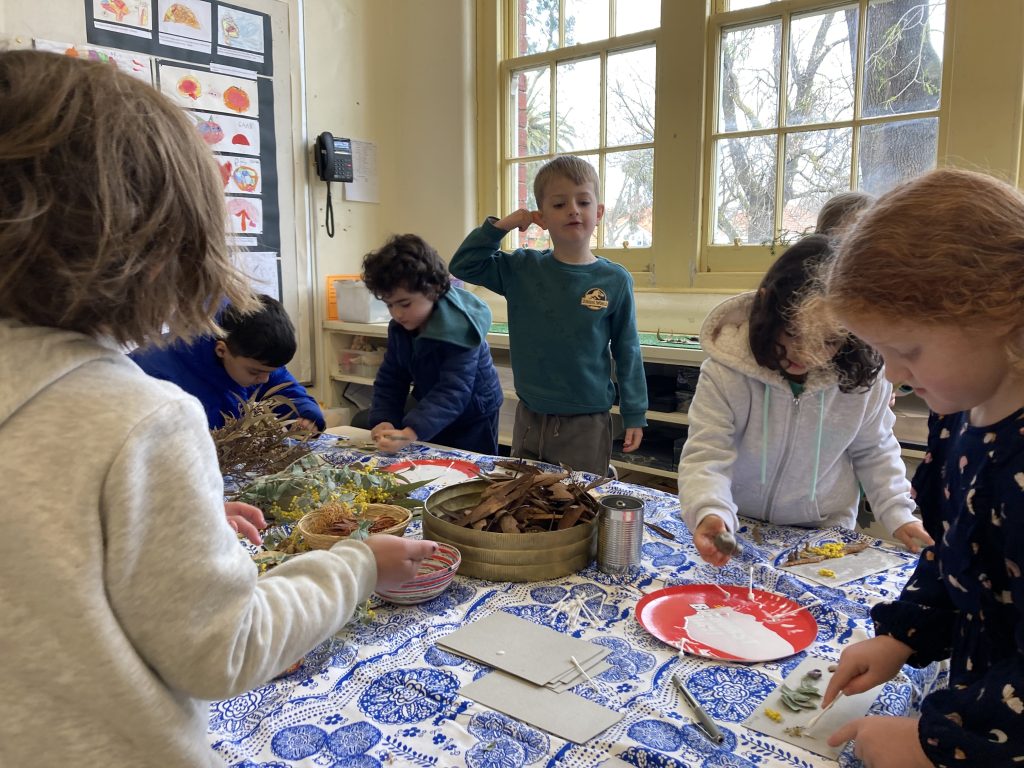
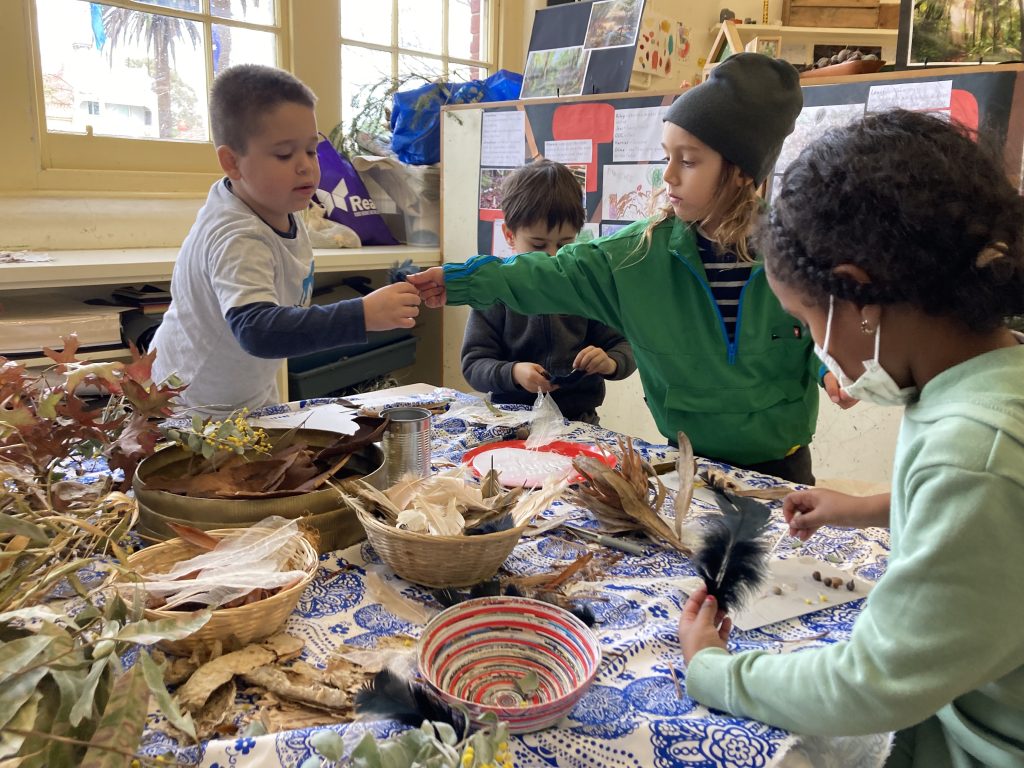
Children created a Dreamtime story and dot painting.
Dot painting originated in 1971 when a school teacher, Geoffrey Bardon, encouraged some of the men to paint a blank school wall in Papunya in the Western Desert. The murals sparked off tremendous interest in the community and soon many men started painting. In 1972 the artists successfully established their own company. The company is entirely owned and directed by traditional Aboriginal people from the Western Desert, predominantly of the Luritja/Pintupi language groups. It has 49 shareholders and now represents around 120 artists.
The children were able to see 2 dot paintings in our Prep Neighbourhood, Honeyant and Blue Tongue Lizard dreaming painted by William Sandy in 2004.
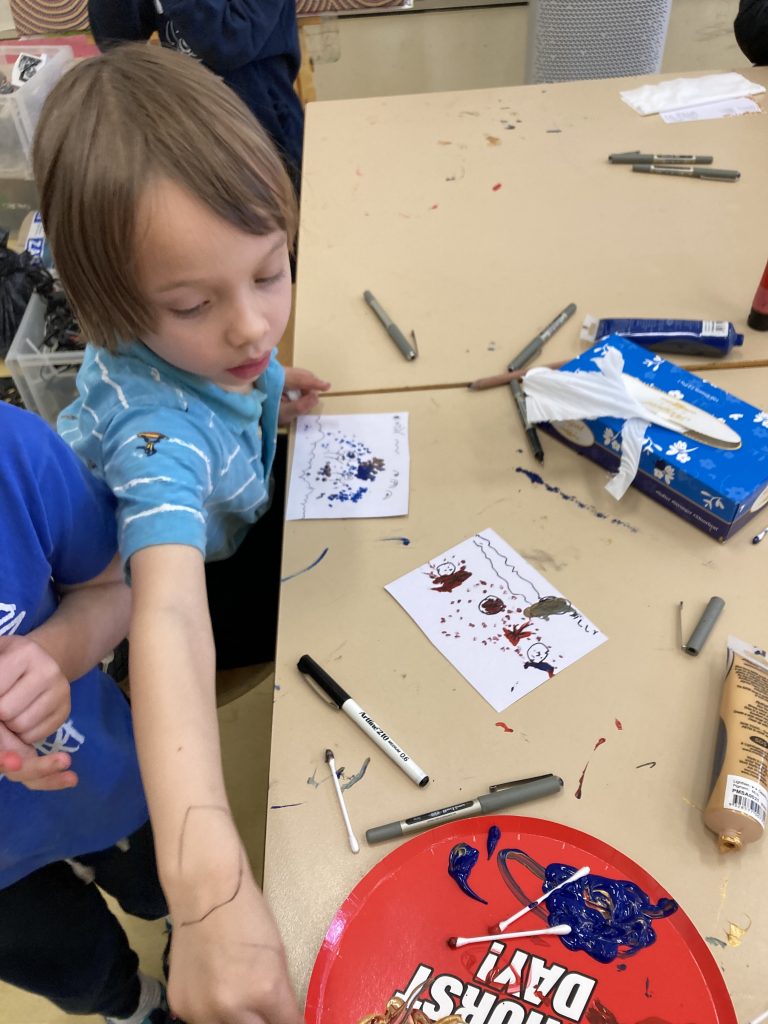
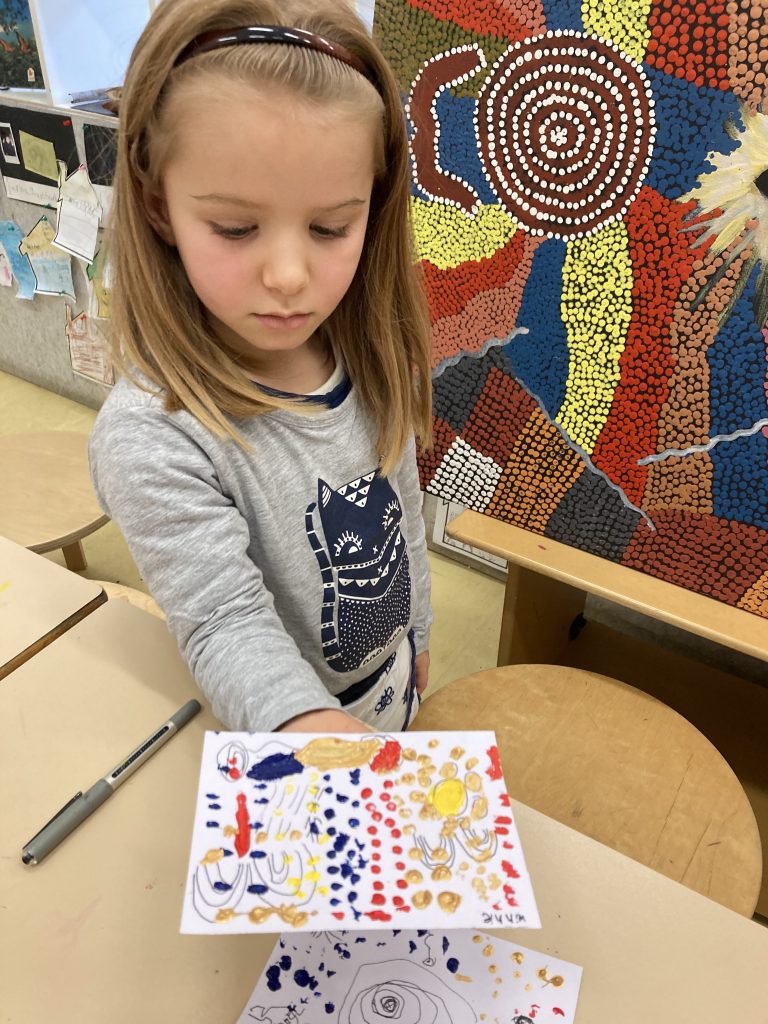
As a group the children discussed and shared their knowledge of The Dreamtime. This is the Aboriginal understanding of the world, of its creation, and its great stories. The Dreamtime is the beginning of the Knowledge, from which came the laws of existence. The Dreaming world was the old time of the Ancestor beings. Symbols were used to tell the stories of the Dreamtime, and are variations of line and dots. According to the Aboriginal belief, all life as it is today -human, animals, bird and fish is part of one vast unchanging network of relationships which can be traced to the great spirit ancestors of the Dreamtime.
